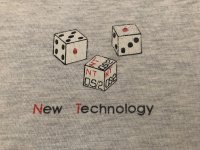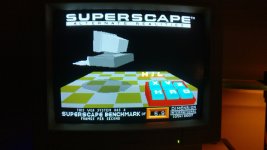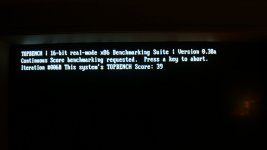Hello everyone, I hope that you have had a nice holiday so far and that everyone is staying nice and safe as we wait for the new year to come around.

With some time off during the holiday, I've spent more time fiddling with the Deskpro to get it set up just as I'd like. The first thing that needed sorting was the CD-ROM drive. As shown a couple of posts ago I was very excited to have gotten a working external single-speed NEC drive. It seems that working was only a relative term since in short order the drive was no longer able to read almost any discs and was severely hunting on those that it did. I took the drive apart and cleaned the lens with some alcohol and a cotton swab to see if that easy fix would take care of it, however there was no improvement. I then spent many hours fiddling with the laser diode output, and while I could get some improvement I could never get it to reliably read discs. I spent many more hours swapping in and testing another internal SCSI single speed drive in the enclosure (NEC CDR-83). However it turns out that while the drive reads discs fine, that particular model had a problem with anything that streamed video or audio from the disc. The buffer setup was very strange in that it would quickly fill the internal buffer and then empty it before filling it again. This had the side effect of making video hitch and pause during playback. NEC offered a hardware fix for this back in the day, but obviously this does me no good. I'm going to hold on to the drive for some possible use in the future.
In any case, having sunk a lot of time and money into getting a working CD-ROM I was loath to try again when a local classified seller was offering the following drive for peanuts, so I jumped on it.
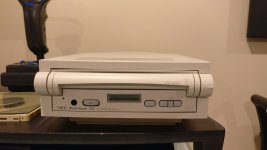
What we have here is an NEC Multispin 3Xe. While it's a couple of years later (1993) than I was originally looking for I've been very impressed. As expected video runs smoothly, the seek times (195ms) are excellent and it has played every disc so far without issue. I also appreciate the audio controls on the front of the drive which allow me to easily play audio CDs while working in DOS programs. I even like the early 90s aesthetic of the case. This would have been incredible when it was first released.
For sound I've finally hooked up my Roland MT-100 that I picked up NIB about a year ago.
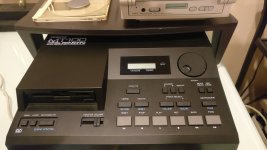
The is a fully MT-32 compatible LA Synthesis sequencer and module and works perfectly in games that support the MT-32. Once again this was a local pickup which is incredibly lucky. Even more interesting was that it also came with a bunch of piano books and QuickDisks filled with music. When I opened the cover of the books I found a stamp for the music store that I used to go to for piano lessons as a kid. Based on the timeframe of when this device was available it is likely that this exact unit was one of the ones I would lust over when going to a lesson. A very small world indeed.

To solve the problem of getting files to and from my modern PC I hooked up a parallel Zip100 drive that I picked up thrifting a while ago.
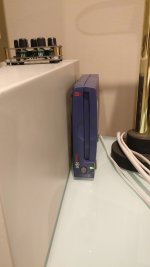
I have a USB Zip drive that I use on the Windows 10 machine to complete the chain. This setup represents something that could have been used on this computer back in the day and makes transferring files back and forth a snap. The only thing to keep in mind is that the Zip disks need to be formatted on the DOS machine for it to work on both. Much like floppies.
I was able to use a NIB 16550 serial card that I've been sitting on for years.

I hooked up the mouse to the card on the theory that the 16550 UART can take care of much of the work polling the mouse and reduce the number of interrupts going to the CPU and thus lower utilization on a system that needs every cycle it can get.
To the existing serial port I hooked up this beauty.
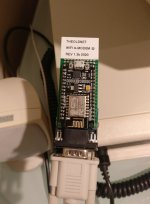
It's attached to a serial cable to allow me to optimize the placement for signal strength. I've already used this on a variety of retro machines from my 286 to my Amiga 500 and it works perfectly on every one. Browsing BBSes on the Deskpro is an absolute treat with a nice CD playing in the background and a cup of tea. 4800 BPS seems to be the sweet spot for the original serial port, and that's just fine.

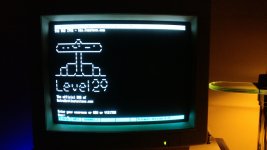
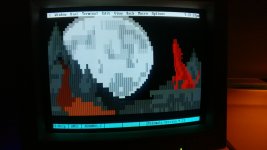
Finally, the issue with the realtime clock seems to have somehow sorted itself out. I kept resetting it every time I used the machine and at some point around 3 weeks ago the time stopped going out of sync with the rest of the world and has been holding just fine, on or off, ever since. I'm not sure what was wrong with it, but perhaps simply using the computer regularly has shaken off some of the cobwebs as it were.
Thanks for continuing to show interest in this machine. Next up, some benchmarks!

